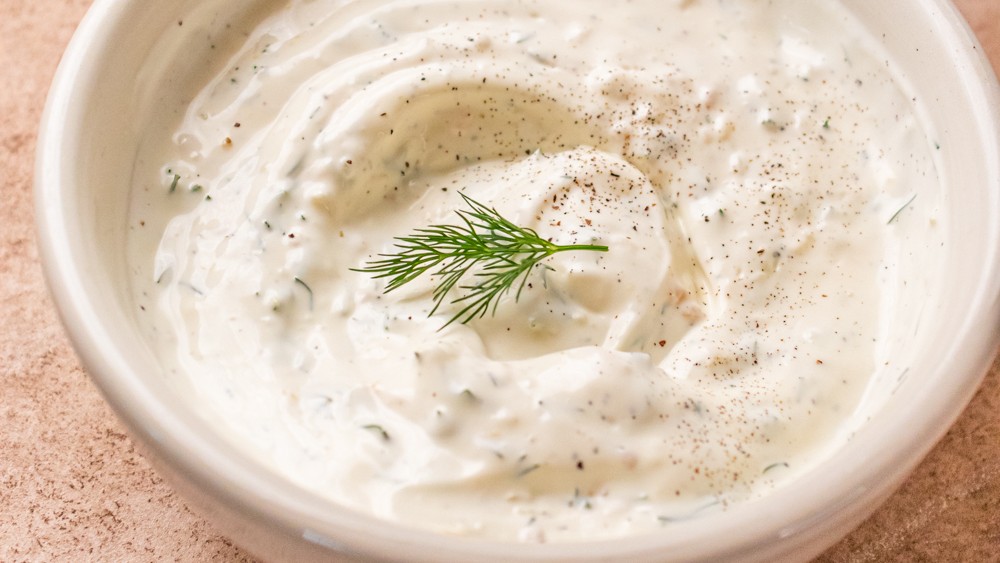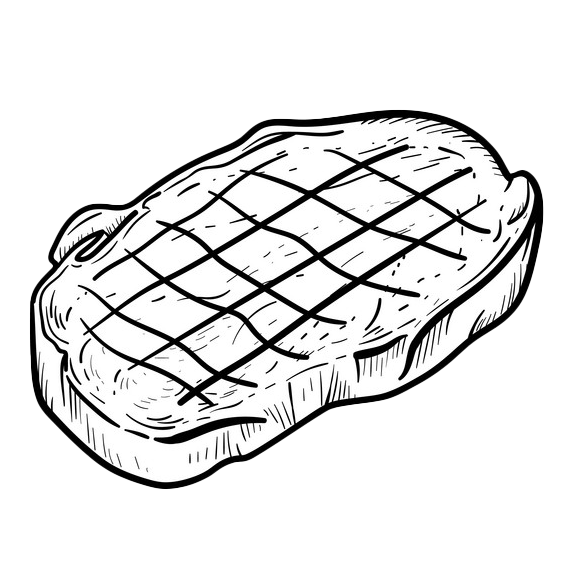Yogurt Dill Sauce

Yogurt Dill Sauce
Sizzlefish Support
Rated 4.0 stars by 3 users
Category
Sauce
Cuisine
Greek
Servings
6
Prep Time
5 minutes
Calories
135
This tangy yogurt dill sauce is the perfect accompaniment for topping on your favorite seafood. Made with healthy ingredients and no preservatives, it’s a sauce you’ll love using again and again!
This yogurt dill sauce gets its thick and creamy texture from two main ingredients. Greek yogurt and mayonnaise.
Why we use Greek Yogurt in this recipe?
Greek yogurt, also known as strained yogurt or yogurt cheese, is a thick and creamy type of yogurt that has been strained to remove most of the whey, resulting in a denser and more protein-rich product. It is believed to have originated in Greece, hence the name.
Greek yogurt is known for its high protein content. It typically contains about twice as much protein as regular yogurt, making it a popular choice for those looking to increase their protein intake. It is also a good source of calcium, probiotics (beneficial bacteria), and other essential nutrients like vitamin B12 and iodine.
Why we use Mayonnaise in this recipe?
Mayonnaise adds a rich flavor due to its high fat content. Since mayonnaise is made of mostly fat, it’s important to use one that comes from a great oil source like avocado oil or olive oil.
1. Avocado oil is high in monounsaturated fats, particularly oleic acid. This type of fat is known to have a positive impact on heart health by helping to reduce bad cholesterol (LDL) levels and increase good cholesterol (HDL) levels, thereby improving overall cholesterol profile. A healthy cholesterol balance is essential for cardiovascular health.
2. Anti-inflammatory properties: Avocado oil contains various compounds, such as phytosterols, polyphenols, and carotenoids, which possess anti-inflammatory properties.
3. Heart health: Olive oil is rich in monounsaturated fats, particularly oleic acid. Consuming monounsaturated fats in place of saturated and trans fats can help reduce bad cholesterol (LDL) levels, lower blood pressure, and decrease the risk of heart disease and stroke. The antioxidants present in olive oil, such as polyphenols, also contribute to its heart-protective effects.
4. Olive oil contains various anti-inflammatory compounds, including oleocanthal and oleuropein. These substances have been shown to exhibit anti-inflammatory effects like nonsteroidal anti-inflammatory drugs (NSAIDs). By reducing chronic inflammation, olive oil may help mitigate the risk of developing inflammatory diseases and conditions.
5. Antioxidant activity: Olive oil is abundant in antioxidants, such as vitamin E and polyphenols. These antioxidants help protect cells from oxidative damage caused by free radicals. The presence of these antioxidants in olive oil is believed to contribute to its anti-aging and disease-preventive effects.
All About The Flavors!
Dill, garlic, lemon juice and lemon zest bring this sauce to life adding complexity and flavor notes that are sure to complement any seafood it’s served with. Fresh dill has a citrusy undertone, like lemon or mild citrus zest. This tangy element contributes to its refreshing quality.
Despite its pungency, fresh garlic has subtle sweet undertones that balance its bitterness. Garlic contains sulfur compounds, which contribute to its characteristic aroma and flavor. These compounds give garlic its distinctively "garlicky" scent and provide a slightly sulfurous taste.
Suggestions for what this Sauce can be used for!
1. Grilled or Baked Fish: Seafood yogurt sauce pairs well with grilled or baked fish, such as salmon, tilapia, cod, or halibut. The creamy and tangy flavors of the sauce complement the mildness of the fish and add a refreshing element.
2. Shrimp or Prawn Skewers: Grilled or roasted shrimp or prawn skewers can be elevated with a dollop of seafood yogurt sauce. The sauce provides a creamy and flavorful element that balances the natural sweetness of the shellfish.
3. Fish Tacos: Seafood yogurt sauce is a fantastic addition to fish tacos. Drizzle the sauce over the fish, along with other toppings like shredded cabbage, diced tomatoes, and fresh cilantro, for a creamy and tangy kick.
4. Seafood Salad: Whether it's a shrimp salad, crab salad, or mixed seafood salad, seafood yogurt sauce can be used as a dressing. Toss the seafood with the sauce and other ingredients like diced vegetables, herbs, and lemon juice for a light and refreshing salad.
5. Grilled Scallops or Lobster: Seafood yogurt sauce can be served alongside grilled scallops or lobster for dipping. The creamy and tangy sauce complements the richness of the seafood, adding another layer of flavor.
6. Seafood Pasta: Add seafood yogurt sauce to pasta dishes that feature seafood, such as shrimp pasta or a creamy seafood linguine. It can be used as a sauce to coat the pasta and seafood, providing a tangy and creamy element.
Ingredients
-
1/2 cup greek yogurt
-
1/3 cup mayonnaise
-
1 tbsp chopped dill
-
1 tbsp lemon juice
-
1 tsp lemon zest
-
1/2 tsp minced garlic
-
1/4 tsp black pepper
Directions
Organize Ingredients.

Stir together ingredients in a small bowl until well combined.

Refrigerate until serving and use with the meal of your choice!

Nutrition
Nutrition
- Serving Size
- 1 Serving
- per serving
- Calories
- 135
- Carbs
- 12 grams
- 36%
- Protein
- 8 grams
- 24%
- Fat
- 6 grams
- 40%









Leave a comment